- Submissions

Full Text
Examines in Marine Biology & Oceanography
Rudimentary Caudal Peduncle in Bagarius Bagarius (Ham.-Buch.) and Blunt Head, Rudimentary Snout and Abnormal Mouth in Labeo Dero (Ham.-Buch.) From River Tawi, Jammu, J&K UT, India
SPS Dutta*
Department of Environmental Sciences,University of Jammu,India
*Corresponding author: SPS Dutta, Department of Environmental Sciences,University of Jammu,India
Submission: August 02, 2021;Published: August 18, 2021

ISSN 2578-031X Volume4 Issue2
Abstract
Bagarius bagarius with rudimentary caudal peduncle and Labeo dero with blunt rounded head, rudimentary snout, one nostril and abnormal mouth were seen among collections from river Tawi in Jammu area and have been described. X-ray analysis in Bagarius bagarius has shown 37 and 28 vertebrae, respectively, in normal and abnormal fish. X-ray analysis of Labeo dero has shown aberrations in skull bones, vertebrae and intestine. Anomalies in Labeo dero are most probably induced by injury during developmental stages. In Bagarius bagarius caudal peduncle deformity is due to injury or predation by a predatory fish.
Keywords: River Tawi; Abnormal Bagarius bagarius; Labeo dero
Introduction
In river Tawi, an important Himalayan clean water tributary of the river Chenab, fish anomalies are rare and have earlier been described by Dutta [1], Barilius vagra; Dutta [2], Cirrhinus mrigala; Dutta et al. [3], Garra lamta; Dutta et al. [4], Labeo bata and Dutta & Sheikh [5], Bagarius bagarius and Crossocheilus latius diplocheilus. These few records of anomalous fishes in river Tawi are because of clean water upstream Jammu or inability of deformed fishes to survive as they easily fall prey to predators. During hydrobiological studies of river Tawi one deformed specimen of Bagarius bagarius and Labeo dero were seen among fish collections and have been described. The objective of this study is to describe deformities in natural water bodies of Jammu and explore their causes.
Topography and Material and Methods
River Tawi, a longest tributary of the river Chenab in Jammu region, has its origin from the laps of Kalikund glacier in Doda district. After flowing through Doda, Udhampur and Jammu districts, it ultimately joins the river Chenab near Marala in Pakistan. River Tawi has torrential flow in Doda and Udhampur districts and turbulent/ laminar in Jammu district. A deformed specimen of Bagarius bagarius and Labeo dero were seen among the collections made by fishermen from river Tawi in Jammu area, purchased, photographed and analysed in the laboratory. These deformed and normal specimens were radiographed (AGFA) for skeletal analysis.
Observations
Bagarius bagarius with rudimentary caudal peduncle
In a normal fish caudal peduncle beyond anal and dorsal adipose fin is narrow and band shaped and caudal fin is unequally bilobed. The upper lobe is longer with filamentous fin rays and ventral lobe is smaller (Figure 1). This abnormal specimen of Bagarius bagarius, measuring 14.5cm and weighing 160gms, was recognised by absence of caudal fin and rudimental caudal peduncle beyond dorsal adipose and anal fin (Figure 2). Caudal peduncle is represented by a skin covered blunt rounded structure. There is no aberration in anal fin rays and dorsal adipose fin in this deformed fish. X-ray analysis has shown the presence of 37 vertebrae in a normal fish. In this aberrant fish there are only 28 vertebrae. Last 3 vertebrae, representing caudal peduncle vertebrae, are truncated and last vertebra is degenerated and curved (Figure 3,4).
Figure 1:Photograph of normal Bagarius bagarius.
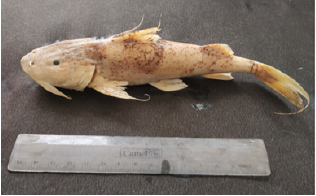
Figure 2:Photograph of deformed Bagarius bagarius.
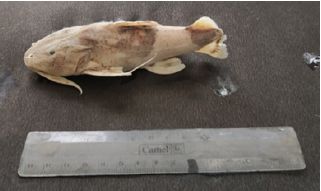
Figure 3:X-ray photograph of normal Bagarius bagarius.

Figure 4:X-ray photograph of deformed Bagarius bagarius.

Labeo dero with blunt rounded head, rudimentary snout and abnormal mouth
In a normal fish snout with two nostrils is well developed, mouth is narrow and inferior, lips thick and continuous and both the jaws well developed (Figure 5). This aberrant specimen of Labeo dero, measuring 14cm and weighing 80gms, was recognised by blunt head with rudimentary snout, presence of single nostril on left side, lower lip fleshy and projected forward and mouth is closed and is represented by a small oral aperture in the area of blunt snout (Figure 6-9). Operculum is thin.
X-ray analysis of abnormal fish has shown blunt and semicircular head and rudimentary snout. Bones are weak. Skull bones like premaxilla, maxilla, dentary, angular, rostral, lacrimal, nasal etc are not clear. There is a long skull fracture extending from hyomandibular bone, in absence of angular bone to the oral cavity.. Lower lip is projected forward and directed upward. Vertebral thickness of first 15 vertebrae reduced, vertebrae lost their normal structure and vertebral centra are deformed. In a normal fish intestinal coils are compact and last intestinal segment is along the abdomen (Figure 7). In this aberrant specimen, intestinal coils are loose and last part of intestinal segment is curved upward before descending and opening through anal opening (Figure 8).
Figure 5:Photograph of normal Labeo dero.

Figure 6:Photograph of deformed Labeo dero.
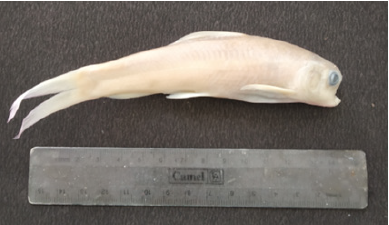
Figure 7:X-ray photograph of normal Labeo dero.
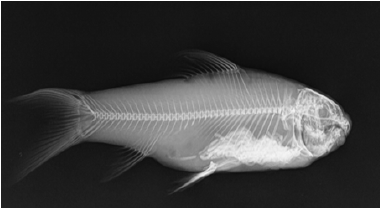
Figure 8:X-ray photograph of deformed Labeo dero.

Figure 9:Photograph of head of abnormal Labeo dero.
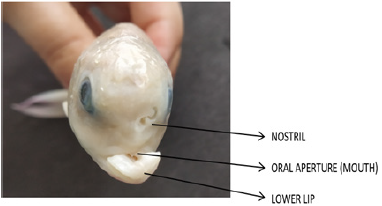
Discussion
Caudal fin in fish is the primary means of locomotion and fish generally use side to side thrust of their caudal fin for propulsion. Strong muscles of the tail play an important role in stability and swimming. The latter helps the fish to get food and avoid predators. It is difficult to explain swimming, stability, feeding and protection from predators in this anomalous specimen of Bagarius bagarius in river Tawi. Teratology of tail region in fishes is not uncommon and has earlier been reported by various workers. Caudal fin absence in fishes has earlier been reported by Menon [6], Coilia revnaldi; Sarkar & Kapoor [7], Wallago Attu and Mystus tengara; Rahman & Raghavan [8] and Thakur et al. [9], Clarias batrachus. Jawad et al. [10] observed partial caudal peduncle and caudal fin in Liza abu. Fiebiger [11] and Nusbaum & Seymon [12] noted absence of caudal fin and deformity of tail in Acanthias vulgaris. Forest J [13] described the anomaly of the caudal lobe and absence of the last vertebra in Gadus luscus. Total absence of caudal fin and partial caudal peduncle has been reported by Kapoor & Sarkar [14], Labeo rohita; Srivastava AK [15], Mastacembelus panacalus and Srivastava [16], Macrognathus aculeatus. There is no earlier record of total absence of caudal fin and caudal peduncle in any fish from Jammu waters. In this solitary specimen of Bagarius bagarius showing rudimentary caudal peduncle and absence of caudal fin appears to be caused by injury during developmental stages or predation by predatory fish [9,10,15-17].
Feeding in labeo dero with closed mouth, narrow oral aperture, skull fracture and continuity of oral cavity beyond hyomandibular bone is unexplainable.. It is possible that some feeding is through the oral aperture in the blunt snout. Fish sniff water coming through the nostrils (also called nares) to detect chemicals in water which can help them to avoid predators, locate food and mate and also direct their migration. Difficulties that are faced by this fish with a single nostril in performing above mentioned functions is unexplainable. It is difficult to explain problems faced by Labeo dero with blunt head and aberrations in various skull bones. A possible cause of cephalic deformity in this specimen of Labeo dero appears to be caused by injury during early developmental stages and has also been reported by Dutta [18]. Vertebral deformities and aberrations in intestinal coils in this deformed fish are most probably due to abnormal mouth and non-availability of nutritious balanced food and various essential nutrients.
Conclusion
A deformed specimen of Bagarius bagarius showing rudimentary caudal peduncle and a single specimen of Labeo dero with blunt head, rudimentary snout, one nostril and abnormal mouth were seen in fish collections from river Tawi and have been elaborated. X-ray analysis of Labeo dero has shown aberrations in skull bones, first 15 vertebrae and intestinal coils. In Bagarius bagarius, there are 37 and 28 vertebrae in normal and abnormal fish, respectively. Deformity in Bagarius bagarius is caused by injury or predation by predatory fish and in Labeo dero due to injury.
References
- Dutta SPS (1989-1990) Vertebral deformity in Barilius vagra (Ham.-Buch.) from Jammu. Matsya 15(16): 166-168.
- Dutta SPS (2018) Record of some deformed specimens of Cirrhinus mrigala (Ham.-Buch.) from river Tawi in Jammu city. The Bioscan 13(4): 831-834.
- Dutta SPS, Sharma J, Koul B (1993) A truncated specimen of Garra lamta (Ham.-Buch.). J NATCON 5(2): 115-116.
- Dutta SPS, Kour H, Sharma J (1996) Occurrence of a malformed specimen of Labeo bata (Ham.-Buch.) in river Tawi, Jammu. J NATCON 8: 147-149.
- Dutta SPS, Sheikh A (2017) Skeletal deformities in Bagarius bagarius (Ham.-Buch.) and Crossocheilus latius diplocheilus (Ham.-Buch.) from river Tawi, a Himalayan stream, in Udhampur area, Jammu region, J&K, India. Int J Fish and Aquatic Studies 5(5): 247-251.
- Menon PMG (1950) Regeneration of the caudal fin in Coilia revnaldi Cuv and Val J Roy As Soc Bengal Sci 16: 125-126.
- Sarkar HL, Kapoor RG (1956) Deformities in some Indian cat fishes. J Zoological Society of India 8(2): 157-164.
- Rahman MF, Raghvan SL (1976) Record of a tailless Clarias batrachus (Linn) from Hebbal tank. J Inland Fish Soc India 8: 124.
- Thakur NK, Muneet SK, Singh Kohli MP (1979) Teratological manifestations in Clarias batrachus (Linn.). Geobios 6: 257-260.
- Jawad LA, Sadighzadeh Z, Valinassab T (2010) Malformaton of caudal fin in the freshwater mullet, Liza abu (Actinopterygii; Mugilidae) collected from Karkhae river, Iran. Anales de Biologa 32: 11-14.
- Fiebiger J (1907) Eln carp with missing tail floss oest. Fishing Catfish 5: 83-85.
- Nusbaum J, Seymon S (1907) On the teratology of bony fish, Zulelch contributes to their regeneration. Arch Entmech Leipzig 24: 114-123.
- Forest J (1950) On a caudal anomalle in Gadus luscus. Bull Soc Zool 75: 129-133.
- Kapoor BG, Sarkar HL (1955) Notes on four deformed specimens of the Indian carp, Labeo rohita (Ham.). Proc Nat Inst Sci India 21B(3): 129-136.
- Srivastava SJ (1975) Deformity in the caudal fin of a freshwater spiny eel Mastacembelus pancalus. Zoologische Beiträge pp. 305-308.
- Srivastava AK (1983-1984) Caudal fin deformity in a freshwater spiny eel Macrognathus aculeatus (Bloch). Matsya 189-191.
- Dulcic J, Soldo A (2005) Absence of caudal fin in Solea solea (Soleidae) collected in the northern Adriatic. Cybium 29(3): 308-309.
- Dutta SPS (2016) Some deformed specimens Mystus bleekeri (Day) and Labeo bata (Ham.-buch.) from the river Chenab in pargwal wetland, Akhnoor, Jammu. Journal of Applied and Natural Science 8(1): 481-484.
© 2021 SPS Dutta. This is an open access article distributed under the terms of the Creative Commons Attribution License , which permits unrestricted use, distribution, and build upon your work non-commercially.
 a Creative Commons Attribution 4.0 International License. Based on a work at www.crimsonpublishers.com.
Best viewed in
a Creative Commons Attribution 4.0 International License. Based on a work at www.crimsonpublishers.com.
Best viewed in 







.jpg)






























 Editorial Board Registrations
Editorial Board Registrations Submit your Article
Submit your Article Refer a Friend
Refer a Friend Advertise With Us
Advertise With Us
.jpg)






.jpg)














.bmp)
.jpg)
.png)
.jpg)










.jpg)






.png)

.png)



.png)






